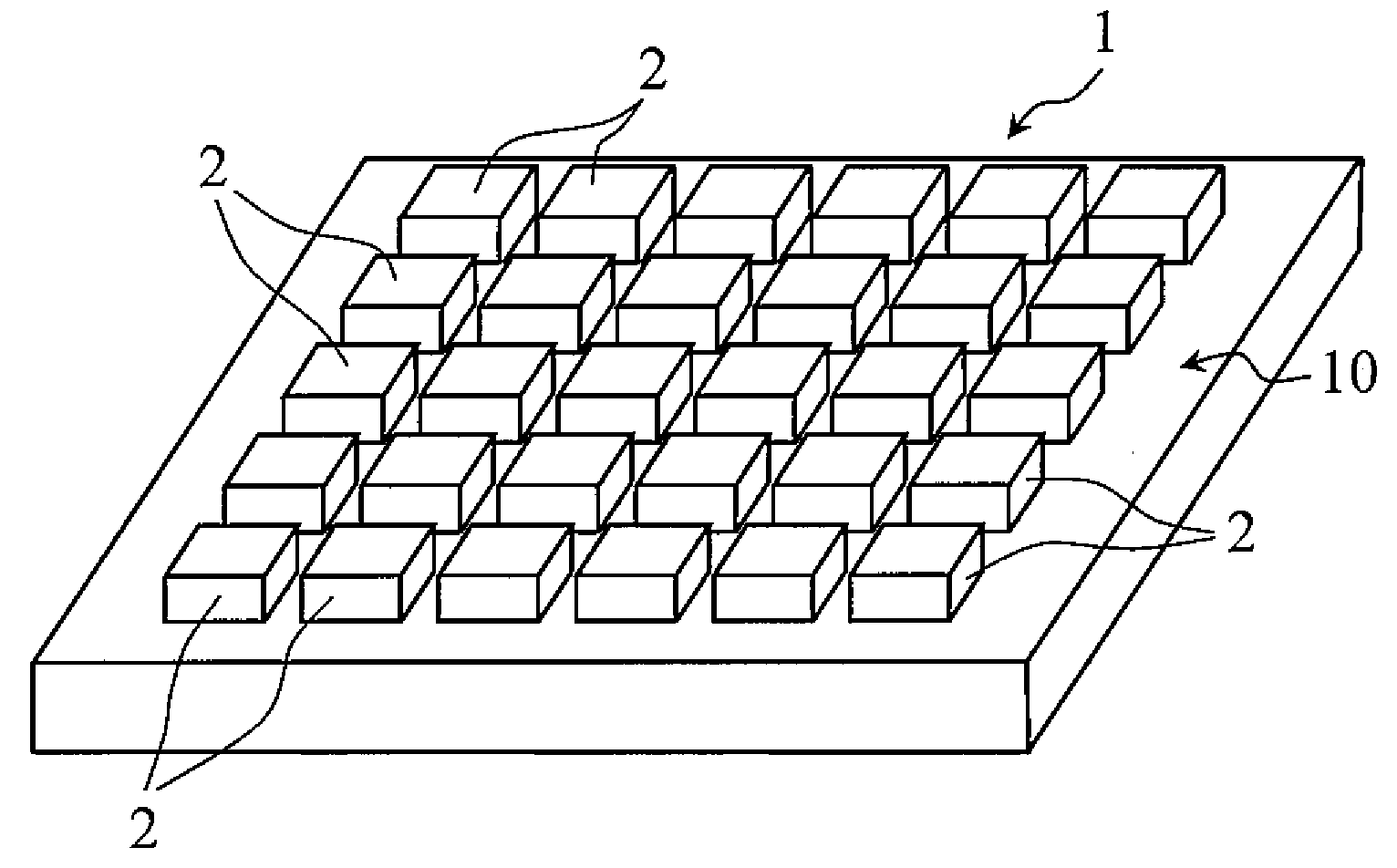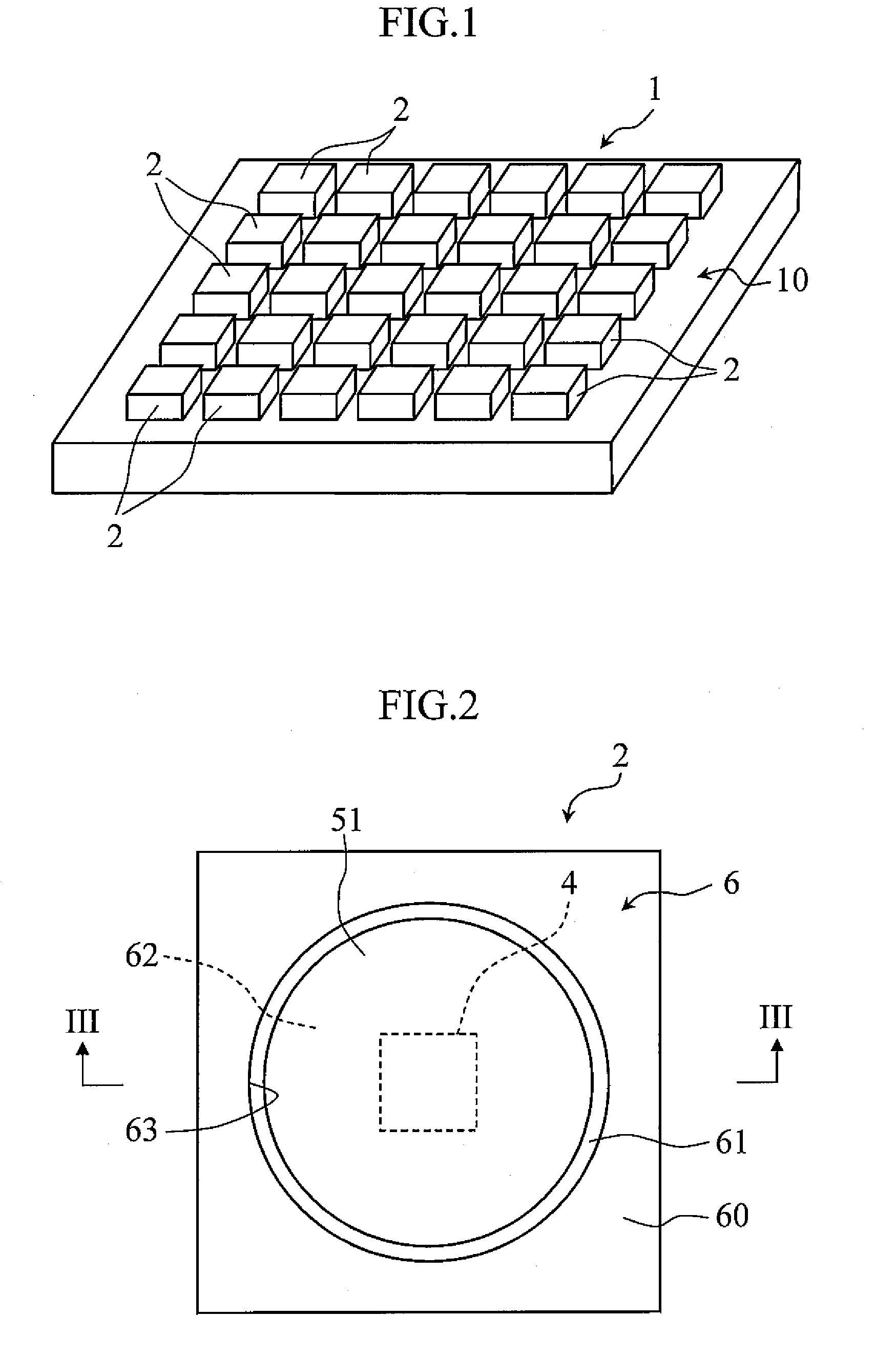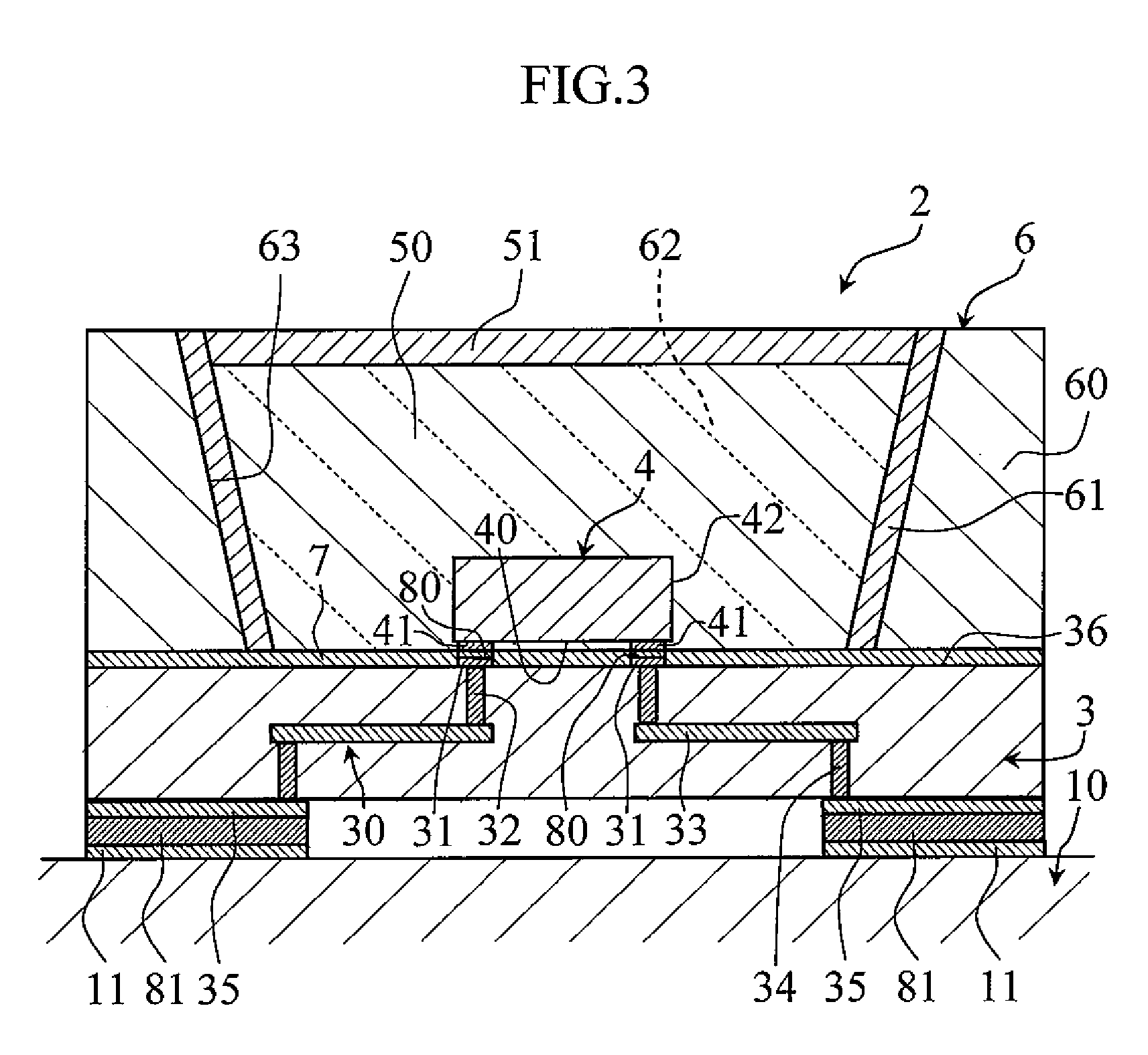Reflective Member, Light-Emitting Device Using Same and Illuminating Device
a technology of reflector and light-emitting device, which is applied in the direction of solid-state devices, aluminium oxides/hydroxides, natural mineral layered products, etc., can solve the problems of light loss and low reflection efficiency, and achieve high light resistance and heat resistance, prevent deterioration of reflectance efficiency, and sufficient strength
- Summary
- Abstract
- Description
- Claims
- Application Information
AI Technical Summary
Benefits of technology
Problems solved by technology
Method used
Image
Examples
example 1
[0114]In the present example, a study was made on a relationship between porosity and reflectance of reflective members made of inorganic particles of various inorganic materials.
[0115](Manufacture of Reflective Member)
[0116]In manufacture of the reflective members, first, inorganic particles of alumina, zirconia, yttria, and titania, were respectively prepared. The inorganic particles were respectively weighed and mixed with particles of calcia, silica, and magnesia at weight ratios of 9.2:0.2:0.5:0.1, to make mixtures.
[0117]Next, each of the above mixtures was further mixed with acryl resin at weight ratio of 9:1, and put into a ball mill together with toluene and alumina balls for 24 hours, to prepare slurry. The slurry was dried by spray drying into powder.
[0118]Successively, 1 g of the above powder was pressed by a hand presser at a pressure of 1 t, to be molded into a tablet with a diameter of 20 mm.
[0119]Finally, the tablet was baked under the conditions shown in the followin...
example 2
[0125]In the present example, a study was made on a relationship between porosity and reflectance of the reflective member made of alumina particles. Further, as a comparative sample, reflectance was also measured using a reflectance standard “Spectralon” (registered mark) manufactured by Labsphere.
[0126]Manufacture of the reflective member, measurement of porosity and reflectance were performed basically in the same way as Example 1. The porosity was adjusted by changing the baking conditions. The baking conditions as well as measurement results of porosity and reflectance are shown in the following Table 2. Measurement results of porosity and reflectance are also indicated by graphs with porosity on the horizontal axis and reflectance on the longitudinal axis. The graphs of measurement results at wavelength of 400 nm and 600 nm are shown in FIGS. 9A and 9B, respectively.
TABLE 2Baking ConditionsTemperatureTimePorosityReflectance [%][° C.][hour][%]400 nm600 nmSamples145025.788.289.9...
example 3
[0129]In the present example, surface texture and section texture were observed using the reflective member (according to the present invention) made in Example 2, with a porosity of 37%. The surface texture and the section texture were observed by a scanning electron microscope (SEM), and the photographs were taken as shown in FIGS. 10A and 10B. FIGS. 10A and 10B are photographs of surface texture and section texture of the present reflective member (reflective layer), respectively.
[0130]For reference, FIGS. 11A and 11B are photographs of surface texture and section texture of an alumina ceramics having a porosity of 0%, prepared as a comparative sample. FIGS. 11A and 11B show the surface texture and section texture of the reflectance standard of the comparative sample, respectively.
[0131]As can be seen from FIGS. 10A and 10B, in the present reflective member, alumina particles are partly combined with each other to form a porous body. With such structure of the present invention, ...
PUM
| Property | Measurement | Unit |
|---|---|---|
| porosity | aaaaa | aaaaa |
| reflectance | aaaaa | aaaaa |
| porosity | aaaaa | aaaaa |
Abstract
Description
Claims
Application Information
 Login to View More
Login to View More - R&D
- Intellectual Property
- Life Sciences
- Materials
- Tech Scout
- Unparalleled Data Quality
- Higher Quality Content
- 60% Fewer Hallucinations
Browse by: Latest US Patents, China's latest patents, Technical Efficacy Thesaurus, Application Domain, Technology Topic, Popular Technical Reports.
© 2025 PatSnap. All rights reserved.Legal|Privacy policy|Modern Slavery Act Transparency Statement|Sitemap|About US| Contact US: help@patsnap.com



